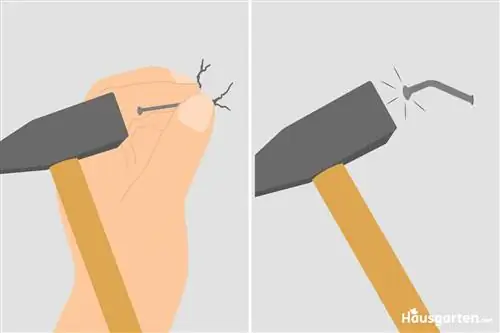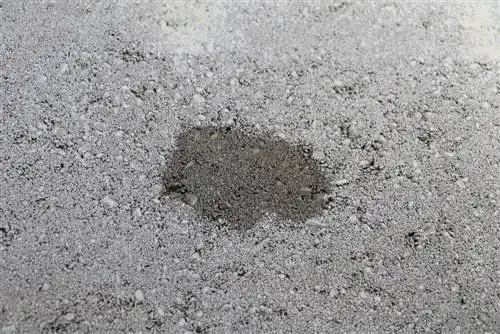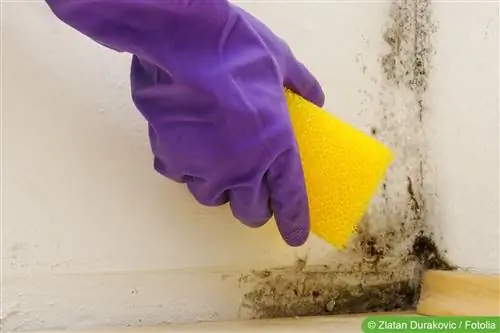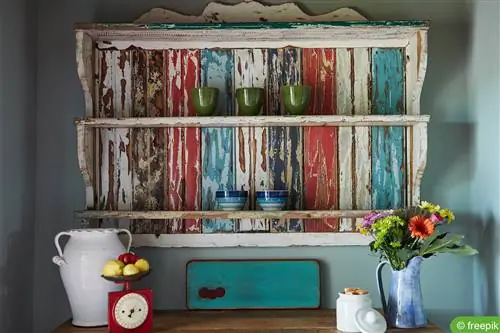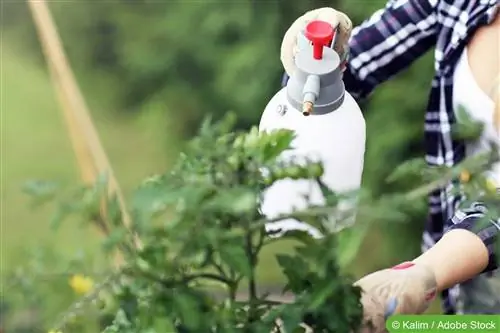- Author admin [email protected].
- Public 2023-12-17 03:39.
- Last modified 2025-01-24 12:45.
Due to the porous properties of concrete walls, nails are only partially suitable for fastening objects in this case. Nevertheless, the attachment can be achieved if you follow various tips and choose the right nail.
Trouble hitting
The way a nail works to fix two objects is simple and effective. In the case of wood, the penetrating nail compacts the material surrounding it. This process ensures stabilization and forces the nail into the wood. In contrast to wood, a concrete wall has completely different properties, which can lead to various difficulties. As a static and mineral structure, for example, no compaction occurs when impacting. Instead, the concrete wall crumbles and provides no support. If nails are too weak, hammering them into the wall will fail because the nail bends quickly due to the hardness of the material. In both scenarios there is no stabilizing effect at all. Driven nails can often be removed easily and do not provide any support. The risk of cracks forming in a concrete wall due to the splitting at the hole is also problematic. In the worst case, penetrating moisture also leads to corrosion in the wall.
Professional approach
Not only the nail itself, but also the tool must be adapted to the intended use. Experienced DIY enthusiasts and experts therefore do not rely on a conventional hammer. A so-called compressed air nailer is used. The operating principle is similar to that of a nail gun or a staple gun. Using compressed air, the machines shoot nails into concrete walls. Additional accessories such as a compressed air hose and compressor are required for commissioning. However, the powerful devices have a high purchase price, which is why buying them for occasional or one-time use is not really worth it.
Attention:
The depth is difficult to regulate with these devices, which is why the tools are only suitable to a limited extent for various purposes, such as hanging pictures.
Choice of nails
From wire pins to steel and brass nails to comb nails - there are a variety of nails, each of which serves a different purpose. Traditional wire pins are made from simple iron. They are suitable for producing various wood connections or attaching other building materials to wood. As the name suggests, wooden nails are also not suitable for fastening to concrete walls. Only the use of special steel nails is effective for brick and concrete walls. The length should be a maximum of three centimeters to prevent the pins made of hardened steel from bending.
Tip:
For decorative purposes, steel nails with a brass lens head are often used indoors. They are ideal for hanging picture frames.
In addition to their extreme robustness, special concrete nails have the property of spreading out in the nail hole and causing compaction. In this way, the much-needed stability is guaranteed. In some cases, despite high quality and hard nails, it may be worthwhile to pre-drill a small hole with a maximum width of 80 percent of the diameter of the nail to prevent the material from bending. High-quality products are also galvanized, which allows them to be used in exterior walls. The alloy protects the nail from moisture and prevents corrosion.
Sensible alternatives

Sinking a nail into a concrete wall is fraught with considerable difficulty. Instead of obsessively using a nail, we often recommend using a dowel. This alternative is particularly worthwhile for those who have a hammer drill that is strong enough for the concrete wall at hand. These devices are also quite expensive to purchase, which is why buying them for occasional use is only worthwhile to a limited extent.
Tip:
Both a pneumatic nailer and an impact drill can be rented from a local hardware store or specialist retailer for a small fee.
If you want to do without nails as well as dowels and screws, you can use various newfangled devices. A picture can also be attached to a concrete wall in another way. Adhesive strips or adhesive strips from well-known manufacturers offer an excellent hold on stable concrete walls. The adhesive solutions offer a strong hold even on paint or wallpaper and can usually be removed without leaving any residue.

